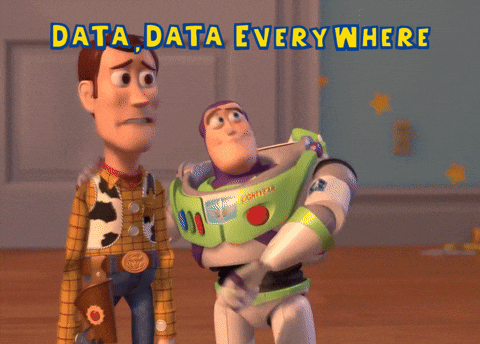In today’s hyper-connected, data-driven landscape, marketing is no longer driven by intuition alone—it’s powered by insights, automation, and intelligent predictions. As we transition deeper into the Artificial Intelligence (AI) age, marketing analytics is undergoing a revolution. Data isn’t just informing decisions—it’s shaping them in real time.
So what does the future of marketing analytics look like in 2025 and beyond? How is AI transforming the way businesses understand their customers, track campaigns, and optimize performance?
Let’s explore the major trends, opportunities, and challenges ahead.

From Descriptive to Predictive and Prescriptive Analytics
Traditionally, marketing analytics focused on descriptive analytics—what happened in past campaigns. But thanks to AI and machine learning, the future is shifting towards predictive and prescriptive models.
- Predictive analytics uses historical data to forecast customer behavior, such as churn risk, purchase intent, and lifetime value.
- Prescriptive analytics goes a step further, offering recommendations on what to do next based on predictions.
For example, instead of just reporting a drop in email engagement, AI-driven tools might suggest the best time, subject line, and audience segment to improve open rates.
In 2025, marketing teams will rely more on automated, proactive insights than dashboards and reports.
Real-Time Personalization at Scale
AI is enabling marketers to move beyond broad segments to true personalization—delivering the right message to the right person at the right time, in real time.
Whether it’s:
- A chatbot recommending products based on recent behavior,
- Dynamic website content adapting to user preferences,
- Or personalized email journeys triggered by live actions,
AI-powered analytics tools are making this possible at scale.
This shift from batch-based to event-driven marketing is redefining customer engagement and loyalty. Businesses that master this will stand out in an increasingly competitive landscape.
The Rise of Zero-Party and First-Party Data
With the phasing out of third-party cookies and growing data privacy regulations (like GDPR and Cameroon’s Cybersecurity & Cybercrime laws), brands must find ethical and transparent ways to gather and use data.

This gives rise to zero-party data (data customers intentionally share) and first-party data (data collected directly from interactions).
AI-driven platforms are now helping marketers:
- Aggregate this data intelligently across channels,
- Uncover patterns in customer behavior,
- And build trust through transparent personalization.
In the AI age, success won’t just be about having more data—but about having better, consent-driven data.
Unified Data Ecosystems with AI Integration
The average marketing stack has exploded in complexity—CRMs, email marketing tools, social media platforms, analytics tools, and more.
One of the key challenges ahead is data fragmentation.
Modern AI-powered Customer Data Platforms (CDPs) are stepping in to create a single view of the customer, breaking down silos and enabling unified, cross-channel insights.
These platforms integrate data from:
- Web and mobile analytics
- Social interactions
- CRM records
- Transactional history
- Offline touchpoints
The result? Marketers get 360-degree intelligence that fuels more accurate targeting, segmentation, and measurement.
Conversational Analytics and Natural Language Processing (NLP)
AI isn’t just crunching numbers—it’s learning to talk.
With the rise of Natural Language Processing (NLP) and Generative AI, marketers can now:
- Ask plain-English questions like “Which campaign had the highest ROI last quarter?”
- Automatically generate insights and summaries,
- And even create content from data patterns.
Conversational analytics lowers the barrier for non-technical marketers to access powerful data insights—fostering a culture of data fluency across organizations.
Ethical AI and Transparency Will Be Non-Negotiable
As AI systems influence more decisions, brands will be under pressure to ensure fairness, explainability, and accountability in their algorithms.
This is especially important in:
- Credit and loan targeting,
- Employment ads,
- Healthcare marketing,
- Political messaging.
In 2025, ethical AI frameworks will be built into marketing tools. Marketers will need to understand the “why” behind the AI’s decisions, not just the outcome.
Expect transparency to become a brand differentiator, with companies proactively sharing how they use AI in marketing and what data they collect.
AI-Powered Content Intelligence
AI is already helping marketers write blog posts, generate ad copy, and optimize headlines. But the next frontier is content intelligence—where AI not only creates, but measures and evolves content based on performance.
Imagine:
- A tool that writes ten versions of your landing page and automatically serves the best-performing one to different audiences,
- An AI system that identifies underperforming assets and suggests updates,
- Or a platform that predicts which content themes will trend in the next quarter based on customer sentiment and search data.
This level of data-driven creativity will redefine content marketing as we know it.
Smarter Attribution Models
In a multi-device, multi-channel world, attribution is more complex than ever. Marketers need to understand which touchpoints are really driving conversions.
AI is powering multi-touch attribution models that consider:
- Time decay (how recent an interaction was),
- Sequence (order of interactions),
- And synergy (how different channels work together).
This helps marketers allocate budgets more effectively and reduce wasted spend.
By 2025, AI-enhanced attribution will be essential to stay competitive, especially as marketing budgets face increased scrutiny.
Democratization of Advanced Analytics
Once reserved for data scientists, AI-powered tools are now putting advanced analytics into the hands of everyday marketers.
No-code and low-code platforms allow teams to:
- Build custom dashboards,
- Set automated triggers,
- Run A/B tests,
- And even train simple machine learning models…
…without writing a single line of code.
This democratization means faster decision-making, less dependency on IT teams, and more agile marketing campaigns.
The Human Element Still Matters
Despite all this automation, the human touch remains irreplaceable.

AI can uncover patterns, but it’s up to human marketers to:
- Ask the right questions,
- Make ethical decisions,
- Craft emotionally resonant campaigns,
- And build meaningful customer relationships.
In the AI age, marketers must evolve into “marketing technologists”—skilled not only in storytelling but also in data interpretation, experimentation, and platform fluency.
Conclusion: A New Era of Intelligent Marketing
As AI becomes more embedded in every aspect of marketing, the role of analytics is transforming from a reporting tool into a real-time decision engine.
The future of marketing analytics lies in:
- Seamless integration across platforms,
- Personalized experiences at scale,
- Ethical, transparent data use,
- And the fusion of creativity with data science.
For businesses in Cameroon and beyond, the opportunities are enormous. Those who embrace AI-driven analytics now will be better positioned to innovate, compete, and grow in the dynamic landscape of 2025.
Bonus Tip for Businesses:
If you’re looking to future-proof your marketing efforts, start by auditing your data ecosystem, investing in smart analytics platforms, and training your team on the basics of AI and machine learning. The future is not just digital—it’s intelligent.












